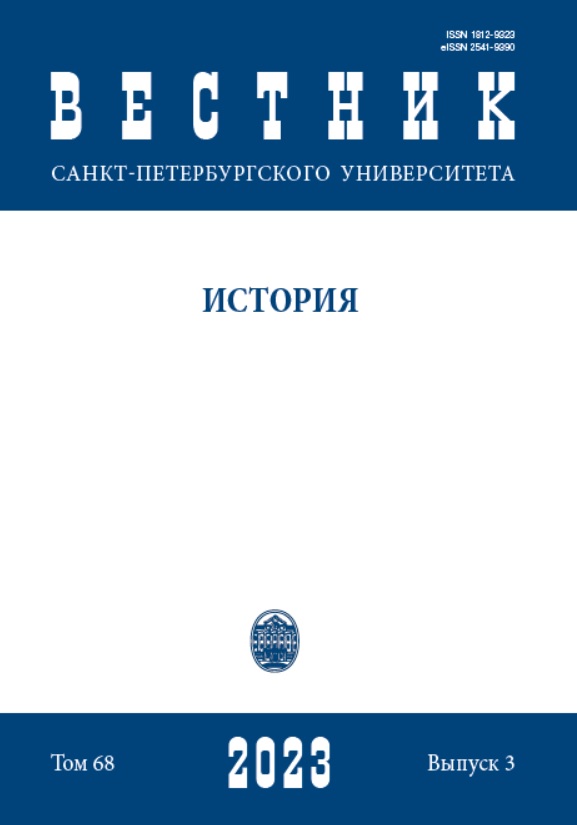Russian Imperial Identity in the Reign of Anna Ioannovna and the Birth of the Petrine Myth
DOI:
https://doi.org/10.21638/spbu02.2023.303Abstract
The paper is devoted to the issue of self-identification of the Russian monarchy of the 18th century and its environment. The authorities and elites constantly turned to the symbolic practices of succession to Peter I in the process of acquiring a new imperial identity. They manifested themselves in various forms: legislative acts, calendar, holidays of Peter’s dates, illuminations, etc. The personality of Peter I and adherence to his ideas formed a certain consensus within the political and economic elite, in connection with which the image of the first Russian emperor began to play one of the fundamental roles in the communicative strategies of Russian monarchs of the 18th century. The reign of Anna Ioannovna became a bifurcation point for the mechanism of political self-identification and continuity of the Russian imperial power. In response to the political crisis of 1730, the cult of Peter the Great began to be formed, reflecting the imperial idea of Russia. Anna Ioannovna, taking advantage of the Russian military success in the 1730s, revised the cult to in order to build her own original ideological narrative. It involved emphasizing the empress’s virtues and presenting Russia as the main defender of the Christian world. A subsequent attempt to “debunk” the Petrine cult, on the contrary, led to its strengthening, both among the Russian political elite and a wider strata (guards and officer corps). This finally formed the Petrine myth. The personality of Peter I turned into something transcendent for the political system of the Russian Empire.
Keywords:
Peter I, Anna Ioannovna, Russian monarchy, imperial identity, Peterhof
Downloads
References
Downloads
Published
How to Cite
Issue
Section
License
Articles of "Vestnik of Saint Petersburg University. History" are open access distributed under the terms of the License Agreement with Saint Petersburg State University, which permits to the authors unrestricted distribution and self-archiving free of charge.





